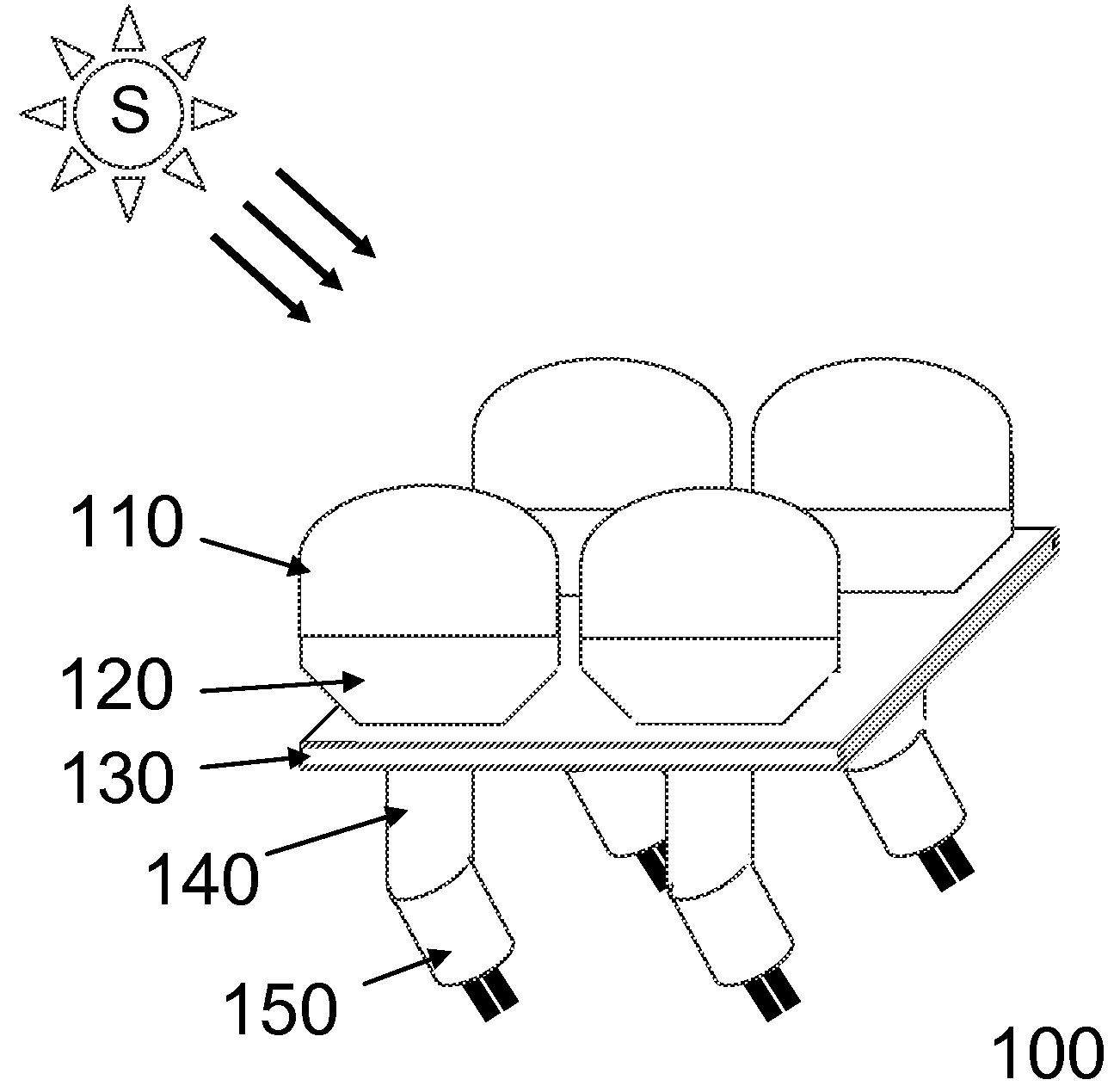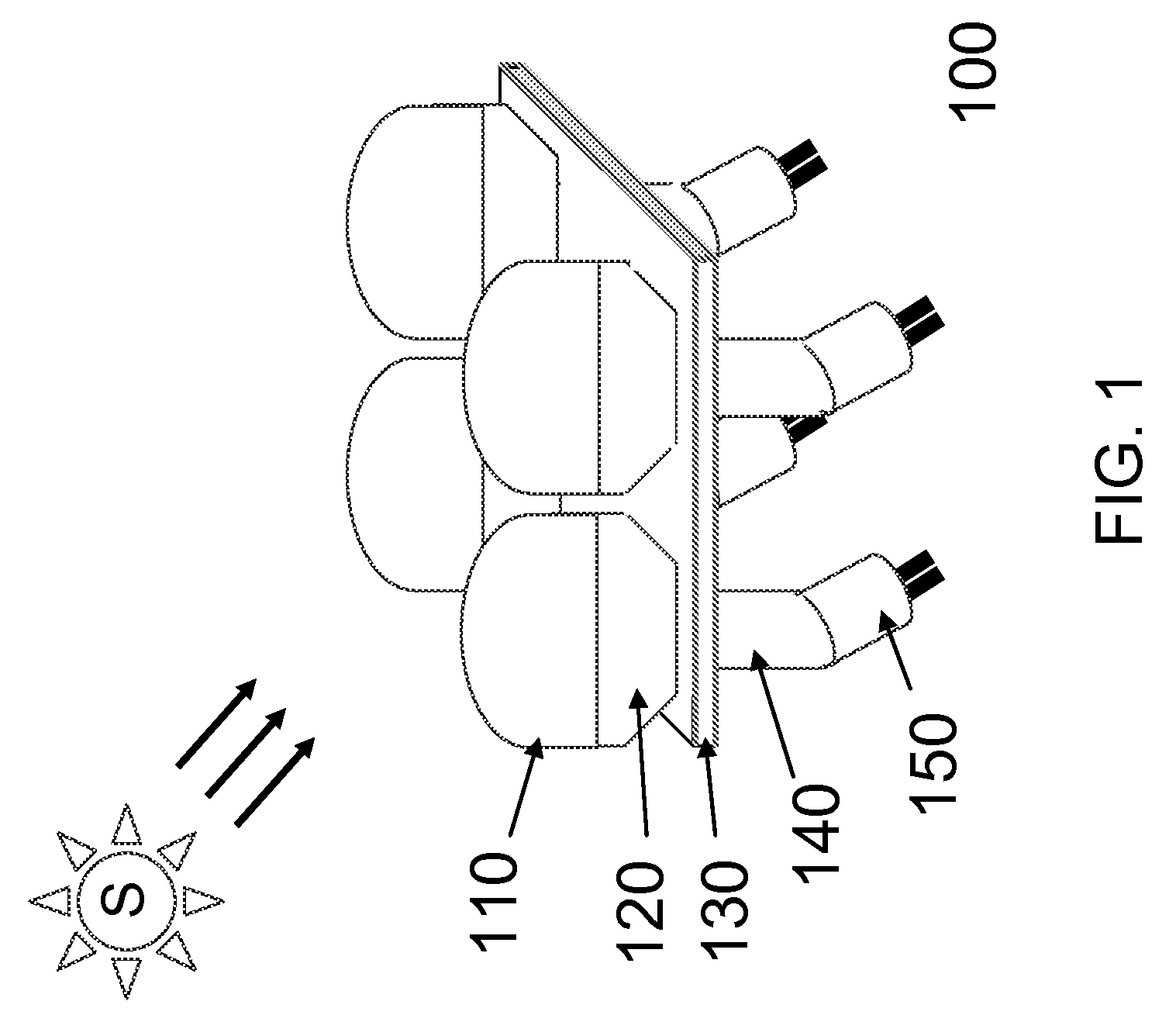Solar-To-Electricity Conversion System Using Cascaded Architecture of Photovoltaic and Thermoelectric Devices
a conversion system and thermoelectric technology, applied in the field of solar electricity, can solve the problems of reducing conversion efficiency, affecting the efficiency of solar energy conversion, so as to achieve higher conversion efficiency, lower cost per output power, and high power output
- Summary
- Abstract
- Description
- Claims
- Application Information
AI Technical Summary
Benefits of technology
Problems solved by technology
Method used
Image
Examples
Embodiment Construction
[0067]A novel modular platform integrates solid-state photovoltaic and thermionic or thermoelectric devices with the solar collection and concentration optics for the solar-to-electricity conversion. Both the conversion efficiency and the heat handling capability under a focal area of high solar concentration are increased by cascading photon-to-electricity devices such as photovoltaic devices and heat-to-electricity devices such as solid-state thermionic and thermoelectric devices, each of which is made of specific composition.
[0068]Embodiments of the present invention thus provide a conversion system that is scalable for the photovoltaic device of area from a few hundreds of micron square to a few tens of centimeter square with the corresponding optical collection area that gives a concentration factor from 250× to 5,000×. The overall conversion efficiency of the solid-state solar engine module of the present invention has potential to achieve 50% or more of which the conversion f...
PUM
 Login to View More
Login to View More Abstract
Description
Claims
Application Information
 Login to View More
Login to View More - R&D
- Intellectual Property
- Life Sciences
- Materials
- Tech Scout
- Unparalleled Data Quality
- Higher Quality Content
- 60% Fewer Hallucinations
Browse by: Latest US Patents, China's latest patents, Technical Efficacy Thesaurus, Application Domain, Technology Topic, Popular Technical Reports.
© 2025 PatSnap. All rights reserved.Legal|Privacy policy|Modern Slavery Act Transparency Statement|Sitemap|About US| Contact US: help@patsnap.com



